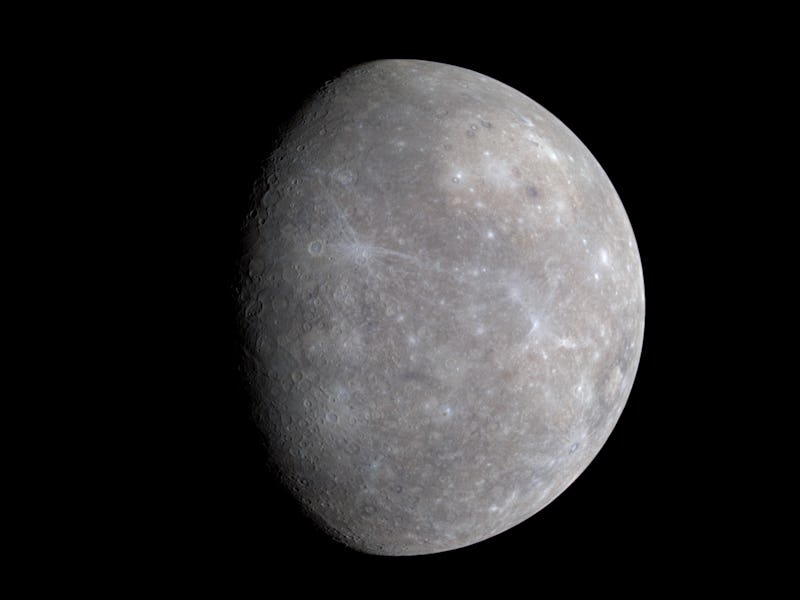You need to see Mercury at its brightest this weekend
Eyes on the skies, people.

As the smallest and nearest planet to the Sun, Mercury is not so easy for us to spot from Earth. The planet is generally outshone in the night sky by other celestial bodies, even though it is relatively far closer to our own world than, say, Jupiter, which can shine bright in the night sky despite being about six times as far as Mercury from Earth.
But this week, you are in luck. Every four months or so, this tiny but mighty planet swings to its furthest position away from the Sun, making it — just — visible in our own night skies.
This week, Mercury will reach its longest eastern elongation on Sunday, January 24, appearing at its brightest and shining alongside the stars for the night.
Part of the reason Mercury is so hard to spot at any other time is the fact it is tiny. Mercury is only slightly larger than our Moon, with a cratered surface which also resembles our natural satellite. Although it is the closest planet to our Sun, Mercury is not the hottest in temperature since Venus, the second closest planet from the Sun, snatches that title with its dense atmosphere that traps the heat.
But Mercury does provide one hell of a view of the Sun, with the star appearing more than three times as large than from our view from Earth, and shine seven times as bright.
Unfortunately, the Sun obscures our vision of Mercury, with the light from our common host star getting in the way.
But on Sunday, Mercury will reach its longest elongation, or its furthest position away from the Sun, therefore becoming at its highest point of visibility to us Earthlings.
Don't miss the rare opportunity to view Mercury in the night sky on January 24.
Mercury swings from the east to the west of the Sun three times a year, and the greatest elongation of the planet takes place 22 days before and after Mercury and Earth are on the same side of the Sun.
How to see Mercury on Sunday — Mercury will reach its longest eastern elongation and will appear at its brightest high in the western sky on January 24.
The planet will be at the maximum angular distance of 18.6 degrees east of the Sun at exactly 9 p.m. Eastern, according to EarthSky.
The planet will be visible in the sky shortly after sundown.
Mercury can be seen with the naked eye, but a pair of binoculars might also be handy if you want to catch the planet glimmer in the twilight.
Unfortunately Mercury does not look this technicolor in reality, but it is still a sight to behold.
Mercury will even outshine nearby stars such as Fomalhaut, appearing five times brighter than the brightest star in the Constellation Piscis.
There's no rush to view this planet either as it will remain at the same distance from the Sun for about a week until January 27, and slightly dim each day until it completely vanishes from our skies on February 8.
If you live in a crowded city like New York, it is best to get as high up as possible in order to minimize light pollution therefore going on a balcony or rooftop is highly recommended.
You also want to block out any light coming from screens of electronic devices, or flashlights and allow your eyes to get accustomed to the darkness for around 30 minutes before you look up.
The next time Mercury will become visible to us again will be on March 6 when it reaches its greatest western elongation of 27.3 degrees from the Sun.